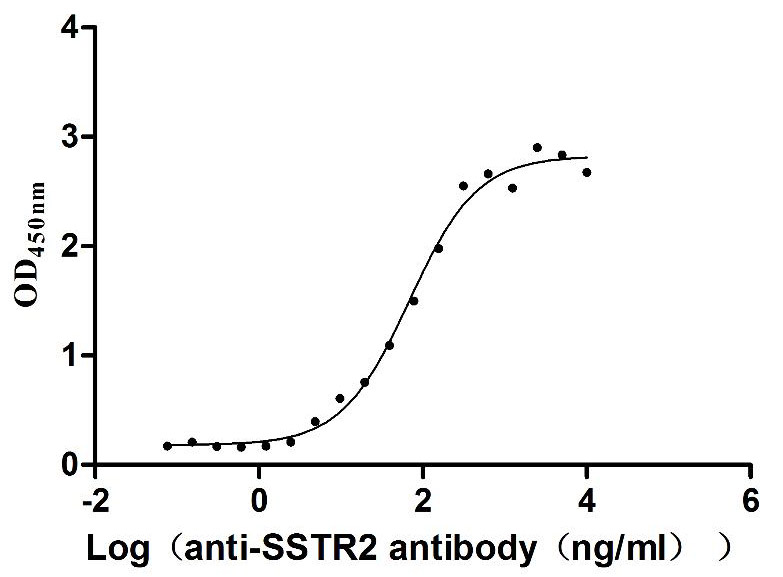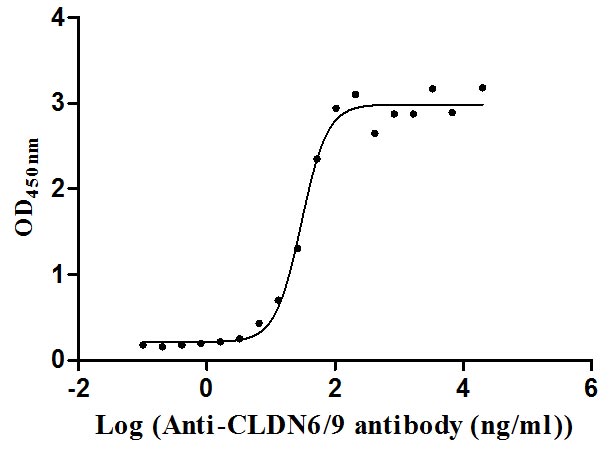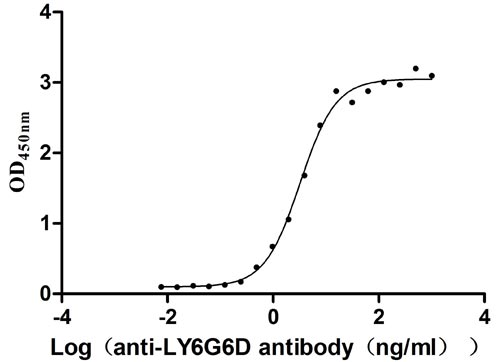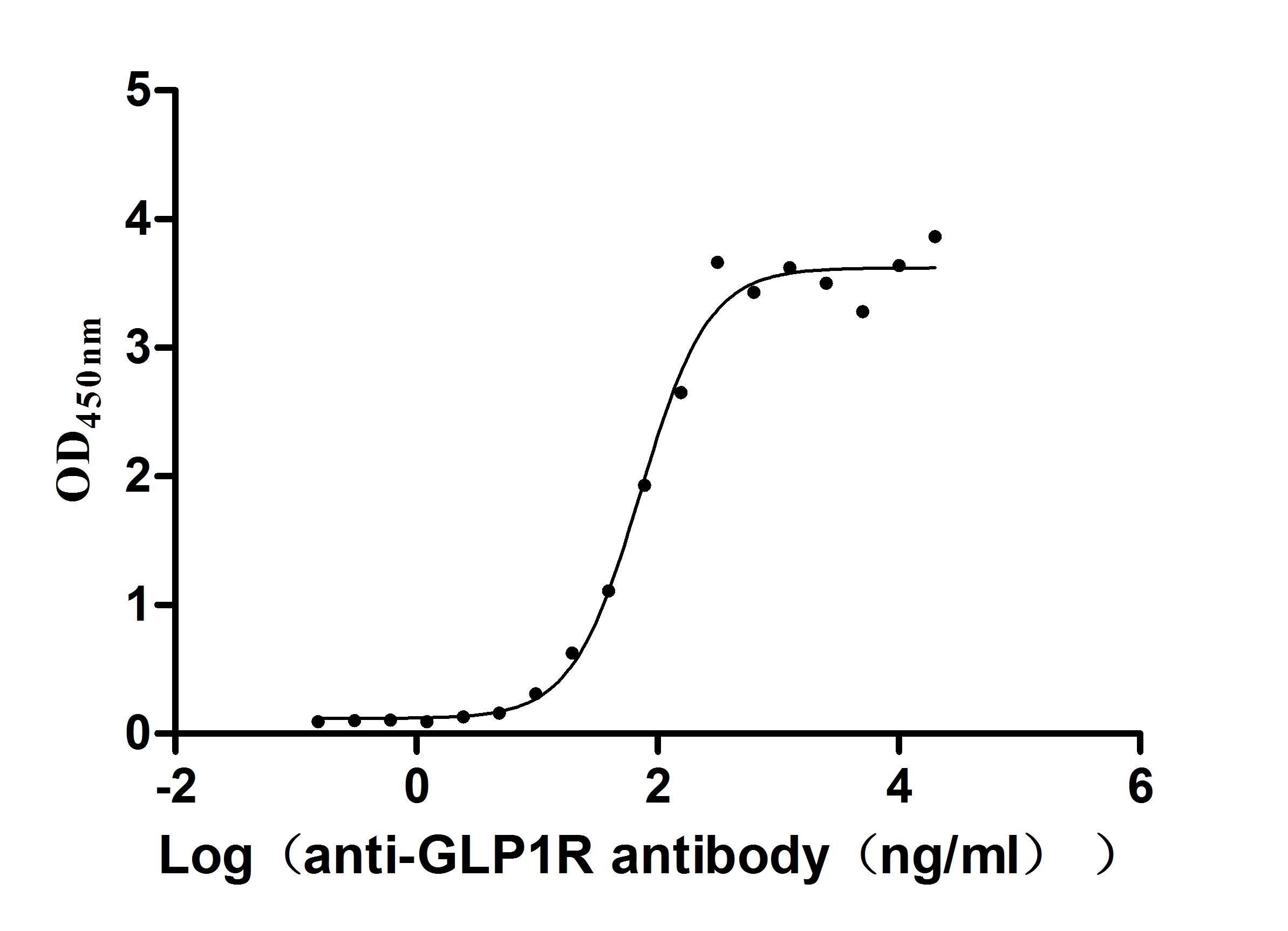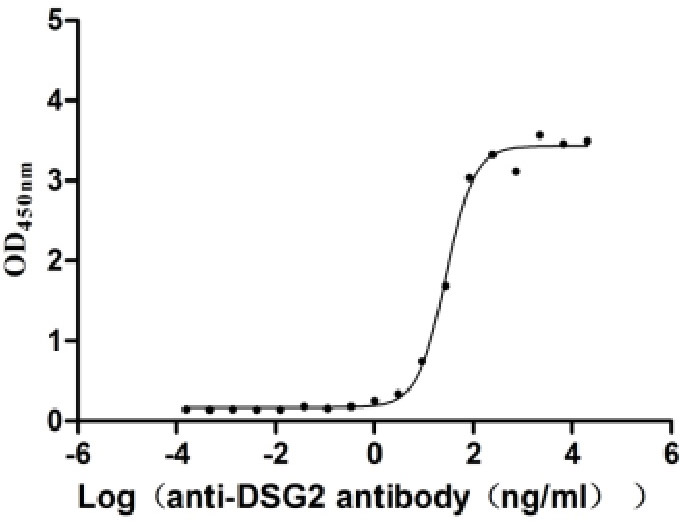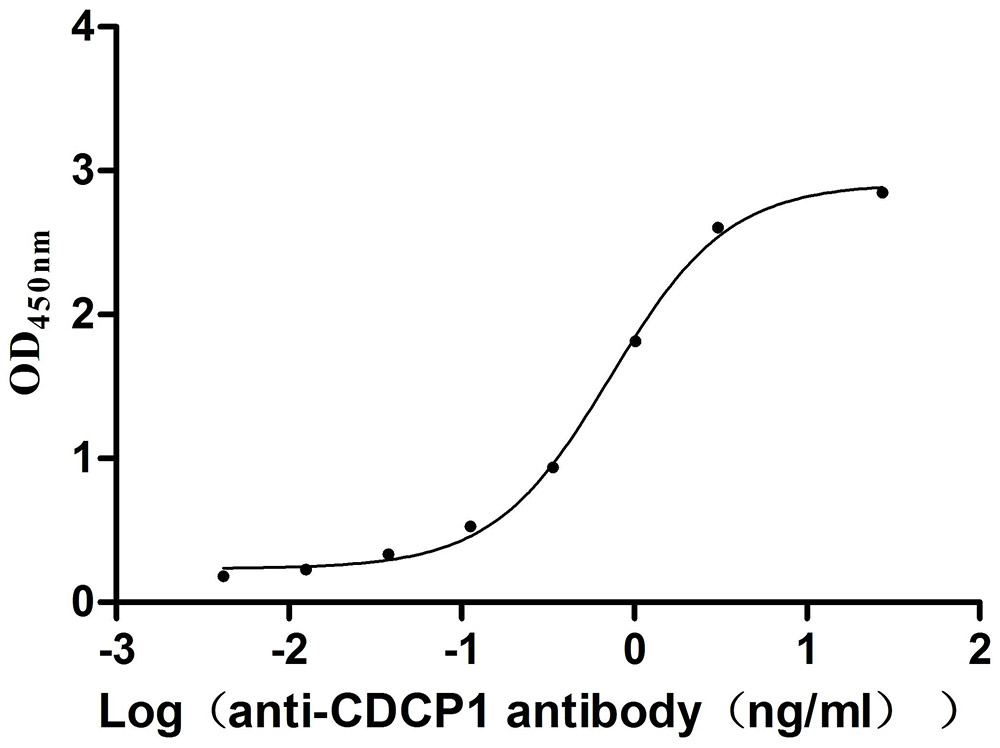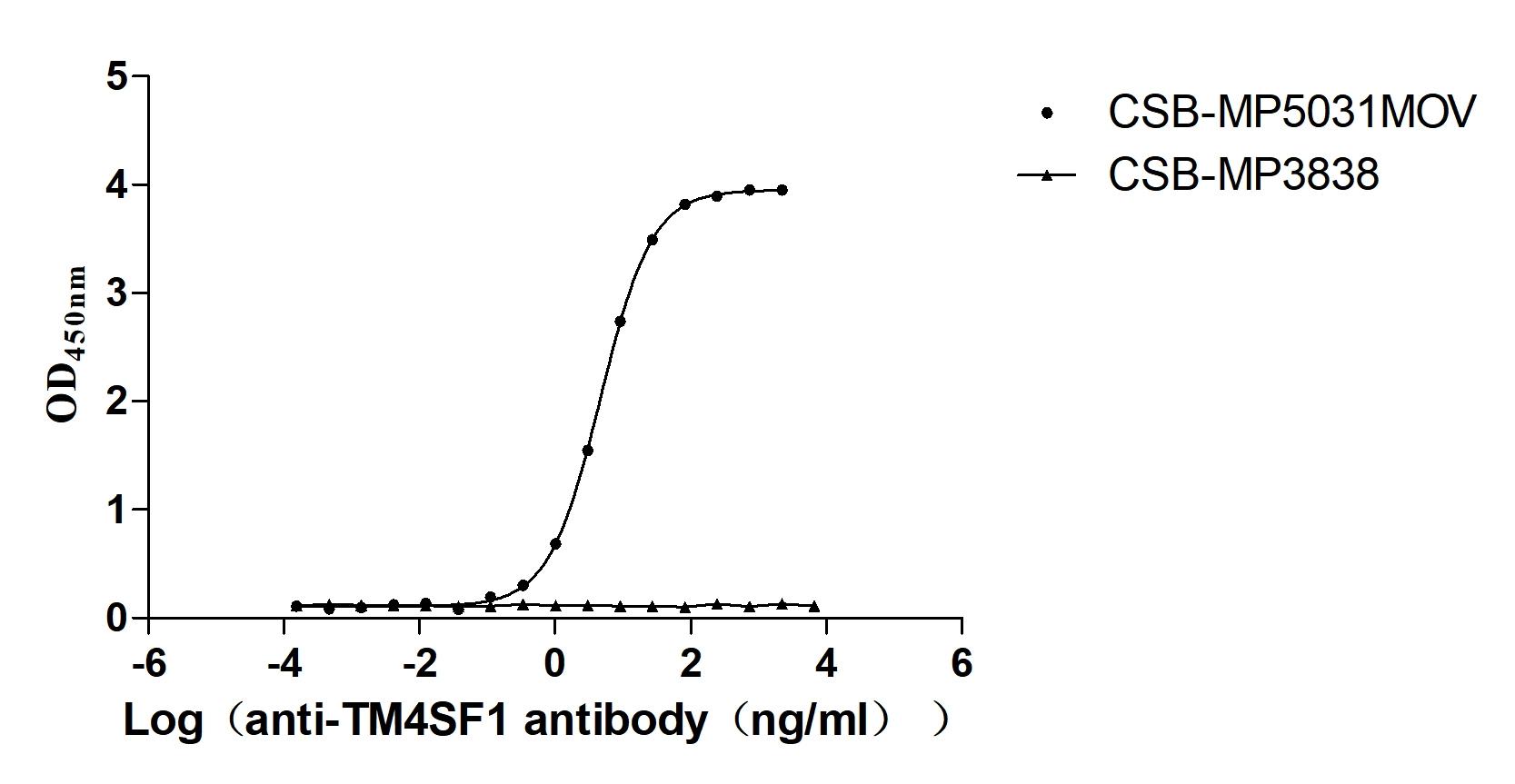Recombinant Mouse Hamartin (Tsc1), partial
-
中文名称:小鼠Tsc1重组蛋白
-
货号:CSB-YP863631MO
-
规格:
-
来源:Yeast
-
其他:
-
中文名称:小鼠Tsc1重组蛋白
-
货号:CSB-EP863631MO
-
规格:
-
来源:E.coli
-
其他:
-
中文名称:小鼠Tsc1重组蛋白
-
货号:CSB-EP863631MO-B
-
规格:
-
来源:E.coli
-
共轭:Avi-tag Biotinylated
E. coli biotin ligase (BirA) is highly specific in covalently attaching biotin to the 15 amino acid AviTag peptide. This recombinant protein was biotinylated in vivo by AviTag-BirA technology, which method is BriA catalyzes amide linkage between the biotin and the specific lysine of the AviTag.
-
其他:
-
中文名称:小鼠Tsc1重组蛋白
-
货号:CSB-BP863631MO
-
规格:
-
来源:Baculovirus
-
其他:
-
中文名称:小鼠Tsc1重组蛋白
-
货号:CSB-MP863631MO
-
规格:
-
来源:Mammalian cell
-
其他:
产品详情
-
纯度:>85% (SDS-PAGE)
-
基因名:
-
Uniprot No.:
-
别名:Tsc1; Kiaa0243; Hamartin; Tuberous sclerosis 1 protein homolog
-
种属:Mus musculus (Mouse)
-
蛋白长度:Partial
-
蛋白标签:Tag type will be determined during the manufacturing process.
The tag type will be determined during production process. If you have specified tag type, please tell us and we will develop the specified tag preferentially. -
产品提供形式:Lyophilized powder
Note: We will preferentially ship the format that we have in stock, however, if you have any special requirement for the format, please remark your requirement when placing the order, we will prepare according to your demand. -
复溶:We recommend that this vial be briefly centrifuged prior to opening to bring the contents to the bottom. Please reconstitute protein in deionized sterile water to a concentration of 0.1-1.0 mg/mL.We recommend to add 5-50% of glycerol (final concentration) and aliquot for long-term storage at -20℃/-80℃. Our default final concentration of glycerol is 50%. Customers could use it as reference.
-
储存条件:Store at -20°C/-80°C upon receipt, aliquoting is necessary for mutiple use. Avoid repeated freeze-thaw cycles.
-
保质期:The shelf life is related to many factors, storage state, buffer ingredients, storage temperature and the stability of the protein itself.
Generally, the shelf life of liquid form is 6 months at -20°C/-80°C. The shelf life of lyophilized form is 12 months at -20°C/-80°C. -
货期:Delivery time may differ from different purchasing way or location, please kindly consult your local distributors for specific delivery time.Note: All of our proteins are default shipped with normal blue ice packs, if you request to ship with dry ice, please communicate with us in advance and extra fees will be charged.
-
注意事项:Repeated freezing and thawing is not recommended. Store working aliquots at 4°C for up to one week.
-
Datasheet :Please contact us to get it.
靶点详情
-
功能:In complex with TSC2, inhibits the nutrient-mediated or growth factor-stimulated phosphorylation of S6K1 and EIF4EBP1 by negatively regulating mTORC1 signaling. Implicated as a tumor suppressor. Involved in microtubule-mediated protein transport, but this seems to be due to unregulated mTOR signaling. Acts as a co-chaperone for HSP90AA1 facilitating HSP90AA1 chaperoning of protein clients such as kinases, TSC2 and glucocorticoid receptor NR3C1. Increases ATP binding to HSP90AA1 and inhibits HSP90AA1 ATPase activity. Competes with the activating co-chaperone AHSA1 for binding to HSP90AA1, thereby providing a reciprocal regulatory mechanism for chaperoning of client proteins. Recruits TSC2 to HSP90AA1 and stabilizes TSC2 by preventing the interaction between TSC2 and ubiquitin ligase HERC1.
-
基因功能参考文献:
- that Tsc1 specifically regulated the expression of groups of gene sets critically involved in dendritic cells survival, proliferation, metabolism and antigen presentation PMID: 29294307
- Moderate increase of TSC1 expression can enhance overall health, particularly cardiovascular health, and improve survival in a gender-specific manner. PMID: 28400571
- Tsc1 role in the differentiation of the neural stem cells. PMID: 29184052
- TSC1 role in the survival of myelinating oligodendrocytes. PMID: 27416896
- The results reveal a role for Tsc1-dependent inhibition of mTORC1 activation during immature NK cell development. PMID: 27601261
- Conditional knockout of Tsc1 led to enhanced proliferation and increased reactive oxygen species production and phagocytosis in alveolar macrophages. PMID: 29522719
- Co-electroporation of the different aberrant alleles and varying amounts of wildtype TSC1 surprisingly revealed already minimal amounts of functional hamartin to be sufficient for phenotype rescue PMID: 27425891
- We established chondrocyte-specific TSC-1 knockout (KO) mice to overactivate the energy metabolic component. PMID: 28523278
- the developmental timing of TSC1 loss dictates the severity of neuronal and glial abnormalities and resulting epilepsy PMID: 29023667
- This study therefore identifies Tsc1 as a novel candidate Anterior segment dysgenesis gene. PMID: 28250050
- Our study identifies Tsc1 as a crucial signaling checkpoint in Dendritic cells (DCs) essential for preserving T-cell homeostasis and response. PMID: 28079897
- loss of Pten, which in cones results in less robust mTORC1 activation when compared with loss of Tsc1, still affords long-term cone survival. PMID: 27362797
- Here, we provide evidence that deletion of Tsc1 from OPCs, but not differentiating oligodendrocytes, is beneficial to remyelination. This finding contrasts with the loss of oligodendroglia and hypomyelination seen with Tsc1 or Tsc2 deletion in the oligodendrocyte lineage during CNS development and points to important differences in the regulation of developmental myelination and remyelination. PMID: 28694334
- these findings highlight a critical role of TSC1 in regulating innate immunity by control of the mTOR1-C/EBPbeta pathway. PMID: 27593484
- Recombination and loss of Tsc1 was demonstrated in skin fibroblasts in vivo and in cultured skin fibroblasts. Loss of Tsc1 in fibroblasts in mice does not lead to a model of angiomyolipoma or lymphangioleiomyomatosis. PMID: 27907099
- Tsc1 haploinsufficiency is sufficient to increase dendritic patterning and Filamin A levels. Reducing filamin A (FLNA) levels has been shown to decrease Tsc1(+/-) dendritic complexity, these data suggest that increased FLNA levels in Tsc1(+/-) mice contribute to abnormal dendritic patterning in the Tsc1 heterozygote condition of individuals with tuberous sclerosis complex. PMID: 27345385
- The present study demonstrates for the first time evidence of microglial activation in a mouse model of TSC with mutation tsc1. PMID: 27263494
- suppression of AKT by hyperactivation of mTORC1, inhibition on nuclear ERalpha signaling, and down-regulation of cell-cycle-driving proteins play important roles in the retarded mammary development induced by Tsc1 deletion. PMID: 26795955
- TSC1 knockout mice are lean, glucose intolerant with a decreased activation of protein kinase B (Akt/PKB) targets that regulate glucose transporters in skeletal muscle. PMID: 27004103
- a pivotal role for Tsc1 in regulating various aspects of visual-pathway development, is reported. PMID: 26449264
- Tsc1 plays a critical role in regulating macrophage survival, function and polarization via inhibition of mTORC1 activity. PMID: 26159807
- TSC1-KO results in the accumulation of transitional-1 B cells and progressive losses of B cells as they mature beyond the T1 stage. However, Peyer's patch germinal centers are unimpaired in TSC1-KO mice. PMID: 26000908
- TSC1 deletion led to enhanced mTORC1 signaling in neural crest derived bones and the increase in bone formation is responsible for the aberrantly increased bone mass. PMID: 25639352
- Results describe the development of new vascular mouse model with a conditional knockout allele of Tsc1 with a Darpp32-Cre allele. This mouse displayed accelerated formation of both kidney cystadenomas and paw hemangiosarcomas. PMID: 25548102
- Striatum-specific deletion of TSC1 accelerated the onset of motor coordination abnormalities and caused premature death in an Huntington's Disease mouse model. PMID: 25351248
- Data indicate that all neurogenin 3 (Neurog3)-tuberous sclerosis complex 1 (Tsc1)-/- mice developed notable adenocarcinoma-like lesions in pancreas starting from the age of 100 days old. PMID: 25425965
- Improved insulin sensitivity upon short-term protein restriction requires TSC1 in mice. PMID: 25131199
- This study demonstrates that TSC1-mTORC1 signaling contributes to the brown-to-white adipocyte phenotypic switch. PMID: 25213336
- The mTORC1 hyperactivation by Tsc1 deletion accelerated malignant phenotypes, including increased tumour mass and enhanced microvascular formation, leading to intracranial haemorrhage. PMID: 24368778
- TSC1 acute down-regulation is detrimental to the survival of both primary and transformed T cells PMID: 24633152
- These findings provide direct evidence of a CD8 T cell-intrinsic role for TSC1 in the regulation of antigen-specific primary and memory responses. PMID: 24818661
- cardiomyopathy caused by cardiac Tsc1 deficiency PMID: 24576459
- Tsc1 loss induces mesothelioma. PMID: 23851502
- Tsc1(Delta/Delta) macrophages are refractory to interleukin (IL)-4-induced M2 polarization but produce increased inflammatory responses to proinflammatory stimuli. PMID: 24280772
- TSC1-dependent control of mTORC1 is crucial for terminal iNKT maturation and effector lineage decisions, resulting in the predominance of iNKT-1 cells. PMID: 24614103
- Loss of TSC1 and activation of mTORC1 results in dedifferentiation and dysfunction of the collecting-duct and causes hyperkalemia. PMID: 24203997
- Tuberous sclerosis 1 (Tsc1)-dependent metabolic checkpoint controls development of dendritic cells. PMID: 24282297
- T-cell-specific TSC1 deletion increased Th1 & Th17 differentiation & led to severe intestinal inflammation. Conditional deletion in Tregs impaired their suppressive activity. TSC1 is a checkpoint for maintaining immune homeostasis. PMID: 24270422
- Conditional deletion of Tsc1 in the female reproductive tract impedes normal oviductal and uterine function by enhancing mTORC1 signaling in mice. PMID: 23475984
- Hap1 knockdown in hippocampal neurons induces the downregulation of Tsc1 and stimulates the activity of mTORC1. PMID: 24227713
- HIF1a acts as a molecular determinant of newborn neuron survival; its TSC1-dependent up-regulation gave Tsc1(null) neurons a survival advantage, despite their misplacement in a novel microenvironment. PMID: 23349360
- TSC1 deficiency in Dendritic cells results in increased mTORC1 but decreased mTORC2 signaling, altered cytokine production, impaired CIITA/MHC-II expression, and defective Ag presentation to CD4 T cells after TLR4 stimulation. PMID: 23776173
- This study demonstrate that abnormalities in a discrete population of neurons can cause global brain dysfunction and that phenotype severity depends on developmental timing and degree of mosaic Tsc1 deletion. PMID: 23664552
- Our data suggest that conditional knockout of Tsc1 in granulosa cells promotes reproductive activity in mice. PMID: 23335988
- TSC1 regulates cell polarity-associated formation of actin fibers through the spatial regulation of Rho family of small GTPases. PMID: 23355874
- TSC1 is crucial for T-cell anergy by inhibiting mTORC1 signaling through both ICOS-dependent and -independent mechanisms. PMID: 22891340
- These findings support an important role for the Tsc1 gene during GABAergic interneuron development, function, and possibly migration. PMID: 22021912
- Tsc1-mutant cells from the neonatal and juvenile subventricular zone generate brain lesions and structural abnormalities; these findings also raise the hypothesis that micronodules and the persistent infiltration of cells to forebrain structures may contribute to network malfunction leading to progressive neuropsychiatric symptoms in TSC PMID: 22068588
- In this study of tuberous sclerosis complex pathogenesis in the kidney, the mouse Tsc1 gene was inactivated in the distal convoluted tubules, and kidney development was monitored for pathology. PMID: 22674026
- findings demonstrate new roles for Tsc1 in Purkinje cell function and define a molecular basis for a cerebellar contribution to cognitive disorders such as autism; loss of Tsc1 in mouse cerebellar PCs results in autistic-like behaviours, including abnorma PMID: 22763451
显示更多
收起更多
-
亚细胞定位:Cytoplasm. Membrane; Peripheral membrane protein.
-
数据库链接:
Most popular with customers
-
Recombinant Human C-X-C chemokine receptor type 4 (CXCR4)-VLPs (Active)
Express system: Mammalian cell
Species: Homo sapiens (Human)
-
Recombinant Human Somatostatin receptor type 2 (SSTR2)-VLPs (Active)
Express system: Mammalian cell
Species: Homo sapiens (Human)
-
Recombinant Human Claudin-9 (CLDN9)-VLPs (Active)
Express system: Mammalian cell
Species: Homo sapiens (Human)
-
Recombinant Human Lymphocyte antigen 6 complex locus protein G6d (LY6G6D) (Active)
Express system: Yeast
Species: Homo sapiens (Human)
-
Recombinant Human Glucagon-like peptide 1 receptor (GLP1R), partial (Active)
Express system: Mammalian cell
Species: Homo sapiens (Human)
-
Recombinant Human Desmoglein-2 (DSG2), partial (Active)
Express system: Mammalian cell
Species: Homo sapiens (Human)
-
Recombinant Mouse CUB domain-containing protein 1 (Cdcp1), partial (Active)
Express system: Mammalian cell
Species: Mus musculus (Mouse)
-
Recombinant Macaca fascicularis Transmembrane 4 L6 family member 1 (TM4SF1)-VLPs (Active)
Express system: Mammalian cell
Species: Macaca fascicularis (Crab-eating macaque) (Cynomolgus monkey)


-AC1.jpg)
